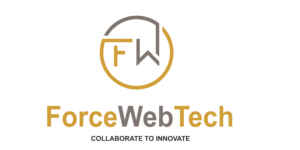Most business leaders recognize the pivotal role of data and analytics in strategic planning and decision-making within today’s intricate business environment.
Python offers a flexible and user-friendly approach to conducting thorough analysis and modeling, enabling businesses to derive strategic insights from their data effectively.
This comprehensive guide outlines how Python empowers analysts and planning teams to forecast trends, conduct simulations, optimize operations, and inform executive strategy step-by-step.
The Role of Python in Business Strategy and Financial Analysis
Financial Modeling and Analysis: Python is now a preferred choice for building financial models to analyze profitability, optimize pricing strategies, evaluate investments, and more. Popular libraries like Pandas, NumPy, and Matplotlib facilitate the creation of detailed models quickly.
● Data Analysis and Visualization
Python simplifies the processing, analysis, and visualization of complex business data. Libraries such as Pandas, Seaborn, and Plotly enable the creation of impactful visualizations that aid decision-making.
● Business Intelligence and Reporting
With tools like Jupyter notebooks, Python allows the creation of interactive reports and dashboards that combine code, analysis, visuals, and explanatory text, making it easier to track KPIs and guide strategic decisions.
● Other Core Functions
Python supports essential business tasks such as forecasting demand, predictive analytics, simulation modeling, customer segmentation, and inventory optimization.
Laying the Groundwork for Strategic Business Planning with Python
For long-term strategy planning, Python enables businesses to:
- Build Forecasting Models: By leveraging historical data, Python helps in predicting future trends, and guiding decisions on market expansion and inventory management.
- Optimize Resource Allocation: Python’s optimization algorithms assist in finding the best allocation plans that maximize profitability within operational constraints.
- Scenario Modeling: Python enables businesses to conduct scenario analysis, quickly adjusting assumptions and evaluating multiple scenarios to stress-test strategic plans.
With its rich libraries and user-friendly syntax, Python has become an essential tool for modern strategic planning and analysis needs.
Constructing a Data-Driven Strategy with Python: A Step-by-Step Approach
Having established Python’s credentials, let’s explore how organizations can harness its prowess to craft resilient business strategies:
● Data Acquisition and Refinement
The cornerstone of any data-centric strategy is high-quality data. Python excels in seamlessly integrating data from diverse sources such as databases, spreadsheets, and APIs. Libraries like Pandas streamline the critical tasks of data cleaning, ensuring accuracy by addressing issues such as missing values, formatting inconsistencies, and outlier identification.
● Exploratory Data Analysis (EDA)
With clean data in hand, Python’s suite of visualization libraries, including Matplotlib and Seaborn, empowers businesses to uncover valuable insights. These tools enable the creation of insightful charts and graphs that reveal patterns, trends, and correlations within datasets. Whether analyzing customer segments, assessing regional sales performance, or visualizing website traffic dynamics, EDA serves as a compass for navigating the business landscape.
● Feature Engineering
Recognizing that raw data often requires refinement for optimal model performance, Python enables organizations to engineer new features from existing datasets. This involves tasks such as computing ratios, categorizing data, or transforming textual information into actionable insights. Effective feature engineering enhances the efficacy of subsequent analytical models by ensuring they are trained on meaningful data attributes.
● Predictive Modeling
Python’s rich ecosystem of machine learning libraries, exemplified by Scikit-learn, empowers businesses to develop predictive models that forecast future outcomes based on historical data. Whether predicting sales trends, anticipating customer churn, or optimizing marketing strategies through behavioral analysis, predictive modeling equips decision-makers with the foresight needed to proactively shape business outcomes.
● Data Storytelling and Communication
While data-driven insights hold immense power, their impact hinges on effective communication. Python facilitates this through the generation of comprehensive reports enriched with visualizations and clear narratives. By elucidating the rationale behind strategic recommendations, Python empowers stakeholders to align on priorities and drive informed decision-making.
Real-World Applications: How Businesses Leverage Python for Strategic Advantage
Let’s examine practical instances where Python fuels strategic decision-making across diverse industries:
➢ Retail
A leading retailer leverages Python to analyze customer demographics and purchase histories, enabling targeted marketing campaigns and personalized recommendations that enhance both sales and customer satisfaction.
➢ Finance
A financial institution utilizes Python to construct risk assessment models that evaluate loan applications and forecast potential defaults. This data-driven approach optimizes lending decisions, mitigating risks while maximizing profitability.
➢ Healthcare
A healthcare provider employs Python to scrutinize patient data, identify health risks, and enable proactive interventions that improve patient outcomes and reduce healthcare expenditures.
The Future of Data-Driven Strategy with Python
Looking ahead, Python’s role in data analytics is poised to evolve alongside emerging trends:
1. Integration of Artificial Intelligence (AI)
Python stands as a pivotal tool for developing and deploying AI applications that automate processes, personalize customer interactions, and confer competitive advantages to businesses.
2. Big Data Analytics
With data volumes escalating, Python’s scalability and compatibility with frameworks like Spark will prove indispensable for efficiently managing and analyzing vast datasets. This capability empowers organizations to extract actionable insights from complex and diverse data sources.
As businesses continue to embrace the potential of data-driven strategies, Python remains steadfast as a linchpin in navigating the complexities of the information age. Its versatility, accessibility, and robust community support position it as an indispensable ally for organizations striving to translate data into decisive actions and sustainable growth.
Getting Started with Python for Data-Driven Strategy
The beauty of using Python for business strategy is that you don’t need a Ph.D. in computer science to get started. Here’s a practical guide to help you begin:
● Learn the Basics
You can kickstart your journey with Python through various online resources and courses. Platforms like Coursera, edX, and Udemy offer excellent courses that cover the fundamentals of Python programming.
● Explore Data Science Libraries
Once you’ve grasped the basics, dive into powerful libraries such as Pandas, NumPy, Matplotlib, and Scikit-learn. These libraries are tailored for tasks like data manipulation, analysis, and machine learning. Many tutorials and books are available online to help you master these tools.
● Practice Makes Perfect
The best way to solidify your skills is by applying them. Platforms like Kaggle provide access to a wealth of datasets spanning different domains. Working on these datasets allows you to hone your Python abilities and build a portfolio of data analysis projects.
● Seek Support When Needed
The Python community is incredibly supportive. Websites like Stack Overflow are invaluable for troubleshooting coding challenges. For more complex projects, consider consulting with Python experts or data analysts who can provide tailored guidance.
Final Verdict
In today’s business landscape driven by data, Python emerges as a powerful ally for gaining a competitive edge. Its user-friendly nature, extensive library ecosystem, and focus on data analysis make it an ideal choice for businesses of all scales. By harnessing Python’s capabilities, you can transform raw data into actionable insights that drive informed decision-making, optimize processes, and pave the way for sustainable growth. Take that first step, harness the potential of data, and witness your business thrive in the digital era!
Bonus Tip: While Python excels in data analysis, it’s worth exploring alternatives like R or Julia, which offer specific features that may better suit your needs. The key is to select the right tool for the task and leverage data effectively to shape a data-centric future for your business.

